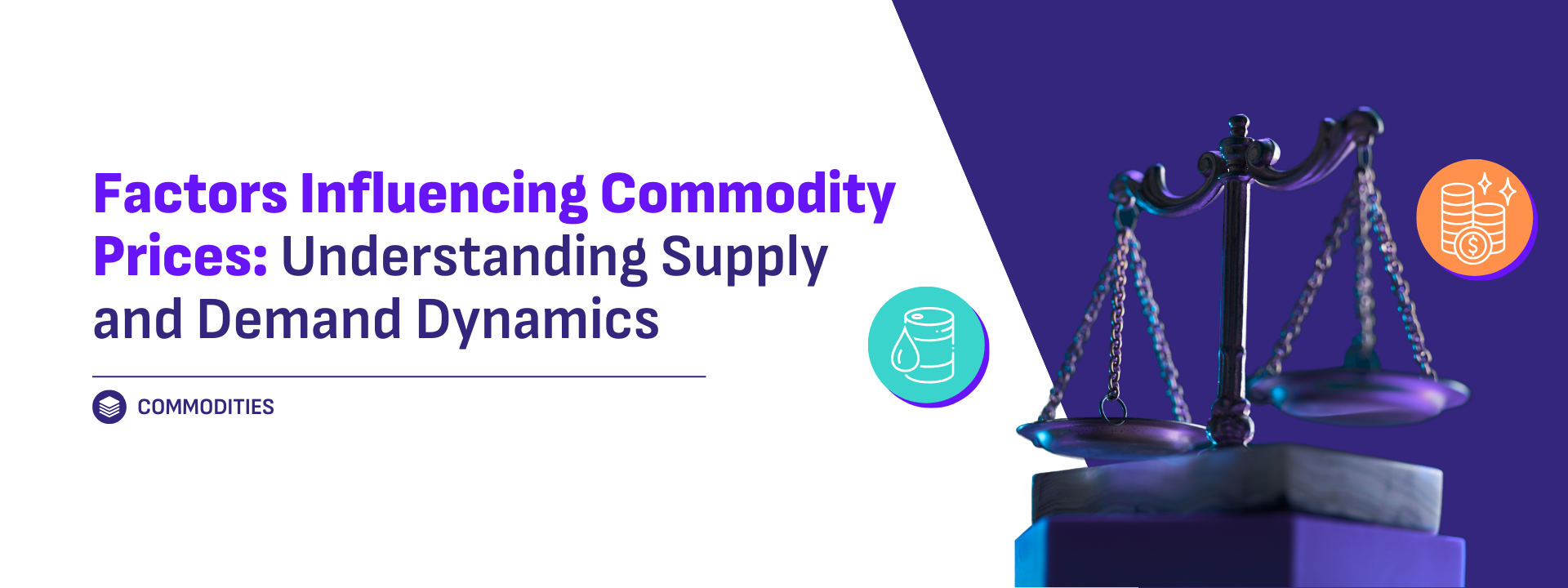

Factors Influencing Commodity Prices: Understanding Supply and Demand Dynamics
Introduction
Commodity prices are influenced by a complex interplay of various factors that can cause significant fluctuations in their value. Understanding these factors is crucial for investors, traders, and industry stakeholders who seek to navigate the commodities market effectively. This article explores the primary drivers of commodity prices, focusing on supply and demand dynamics, geopolitical events, and market speculation.
Supply and Demand Dynamics
1. Supply Factors
- Production Levels: The amount of a commodity produced directly impacts its price. For instance, a bumper crop of wheat or an increase in oil production can lead to an oversupply, potentially lowering prices. Conversely, production shortfalls due to adverse weather conditions or operational issues can tighten supply and push prices higher.
- Inventory Levels: The quantity of commodities held in storage also affects prices. High inventory levels can indicate a surplus, which might depress prices. Low inventory levels, on the other hand, can signal scarcity and lead to higher prices. Traders and analysts often monitor inventory reports to gauge market conditions.
- Technological Advances: Innovations in extraction, farming, or manufacturing processes can affect supply. For example, advancements in hydraulic fracturing (fracking) technology have significantly increased oil production in recent years, influencing global oil prices.
2. Demand Factors
- Economic Growth: Commodity demand is often linked to economic activity. During periods of economic expansion, demand for commodities such as metals, energy, and agricultural products typically increases, driving prices up. Conversely, economic downturns can reduce demand and lead to lower prices.
- Consumer Preferences: Shifts in consumer behavior can impact commodity demand. For example, a growing preference for renewable energy sources may reduce the demand for fossil fuels, while increased interest in electric vehicles can drive up demand for lithium and other battery metals.
- Industrial Demand: Commodities are essential inputs for various industries. Changes in industrial production levels and manufacturing activity can influence demand. For instance, increased construction activity boosts demand for steel and copper, while a slowdown in manufacturing can have the opposite effect.
Geopolitical Events
1. Political Instability
- Conflicts and Wars: Geopolitical conflicts and wars can disrupt commodity supply chains, especially for those commodities sourced from politically unstable regions. For example, conflicts in oil-rich regions can lead to supply disruptions and price spikes.
- Sanctions and Trade Policies: Government-imposed sanctions and trade policies can impact commodity prices by restricting or altering trade flows. Sanctions on oil-exporting countries can limit supply and drive up global oil prices.
2. Regulatory Changes
- Environmental Regulations: New environmental regulations can affect commodity production and prices. For instance, stricter emissions standards may increase the cost of coal production, leading to higher coal prices. On the other hand, regulations promoting renewable energy can boost the demand for commodities like lithium and cobalt.
- Agricultural Policies: Government policies related to agriculture, such as subsidies or tariffs, can influence the production and pricing of agricultural commodities. Changes in these policies can affect global supply and demand dynamics.
Market Speculation
1. Investor Sentiment
- Speculative Trading: Speculators play a significant role in commodity markets by buying and selling contracts based on anticipated price movements. Their activities can lead to price volatility and affect market stability. For example, speculative buying in anticipation of rising oil prices can drive prices up, even if the underlying supply and demand conditions remain unchanged.
- Market Sentiment Indicators: Traders often use sentiment indicators, such as futures positions and market surveys, to gauge investor sentiment. Positive sentiment can drive prices higher, while negative sentiment can lead to declines.
2. Hedging Activities
- Risk Management: Companies and investors use commodities futures and options to hedge against price fluctuations. While hedging can stabilize prices for producers and consumers, it can also introduce additional market dynamics and influence price movements.
3. Algorithmic Trading
- High-Frequency Trading: Algorithmic and high-frequency trading strategies can impact commodity prices by executing large volumes of trades in milliseconds. These trading strategies can amplify price swings and contribute to market volatility.
Summary
Commodity prices are shaped by a multitude of factors, including supply and demand dynamics, geopolitical events, and market speculation. By understanding these factors, investors and traders can make informed decisions and better navigate the complexities of the commodities market. Monitoring production levels, economic indicators, geopolitical developments, and market sentiment can provide valuable insights into price movements and help manage investment risks effectively.


